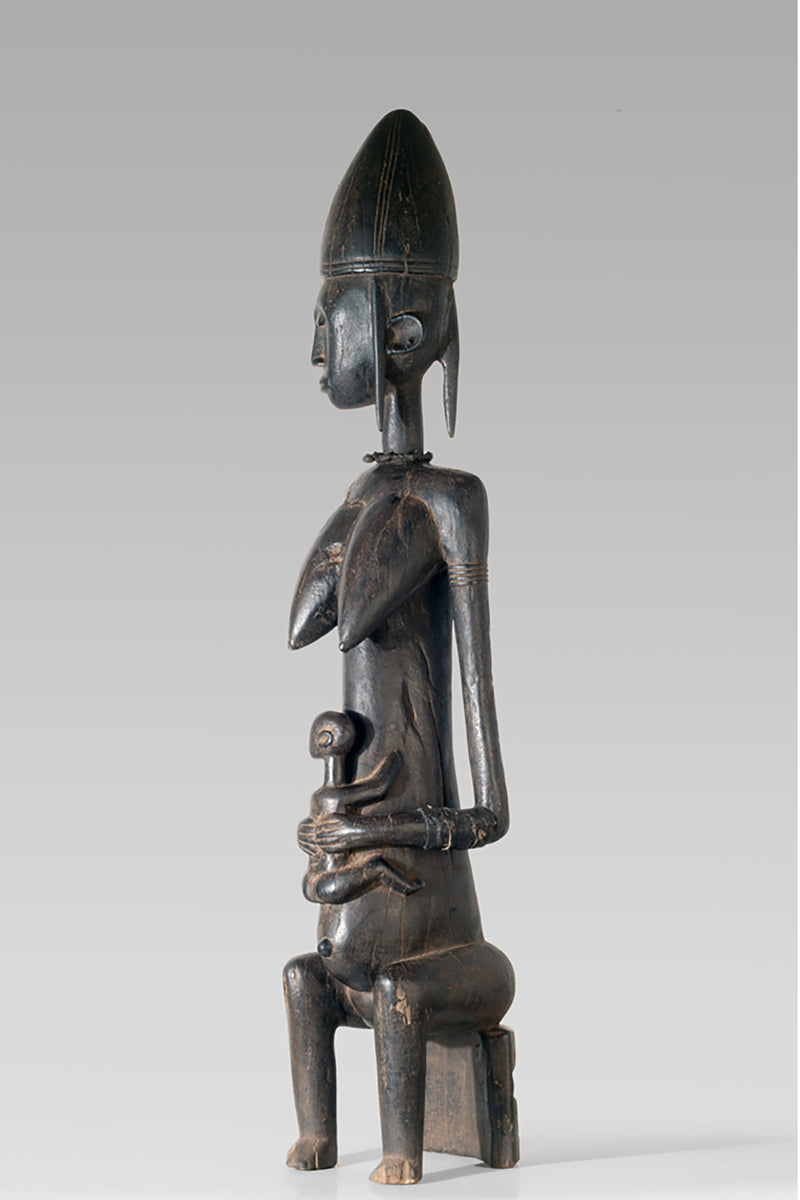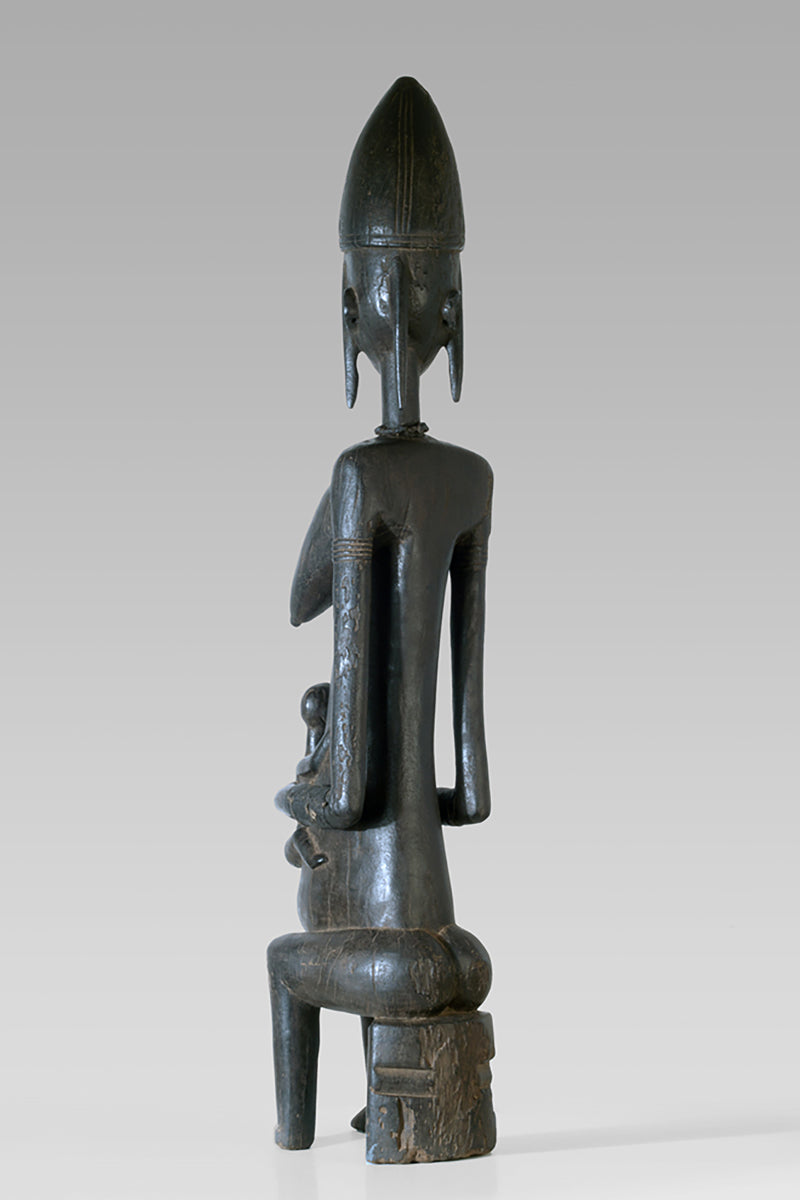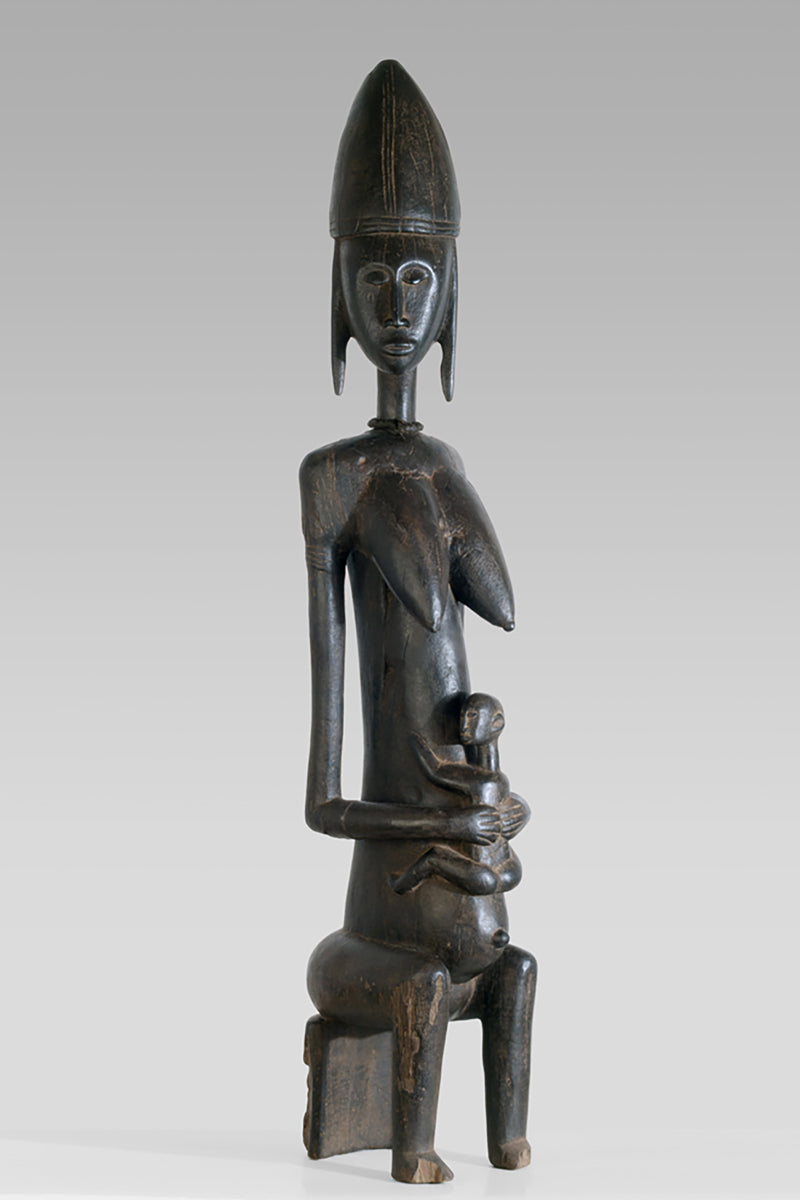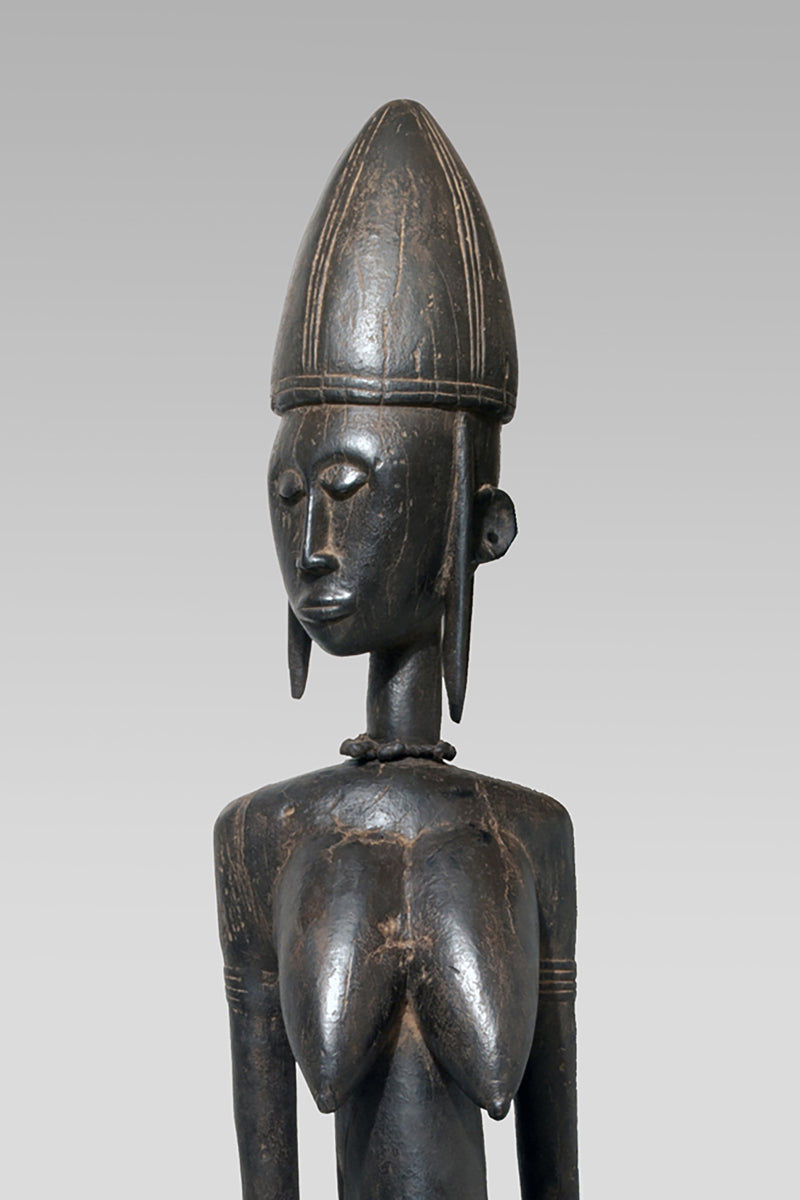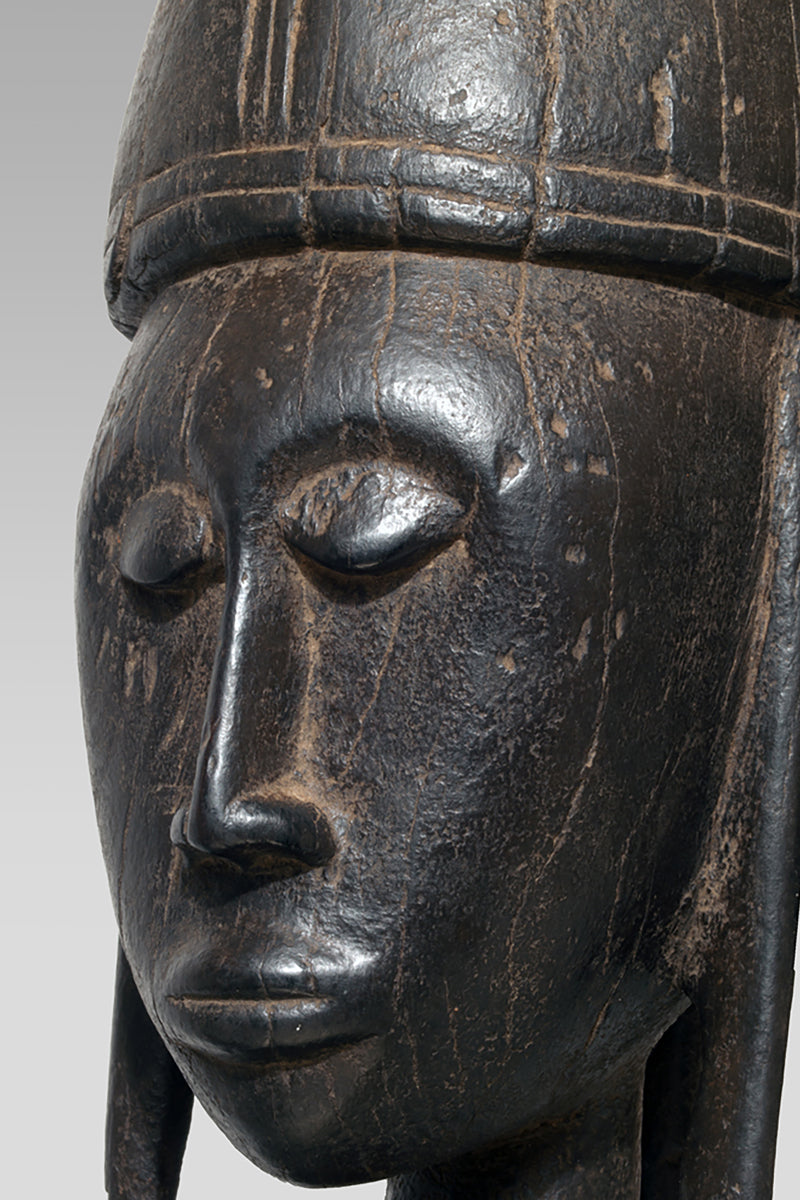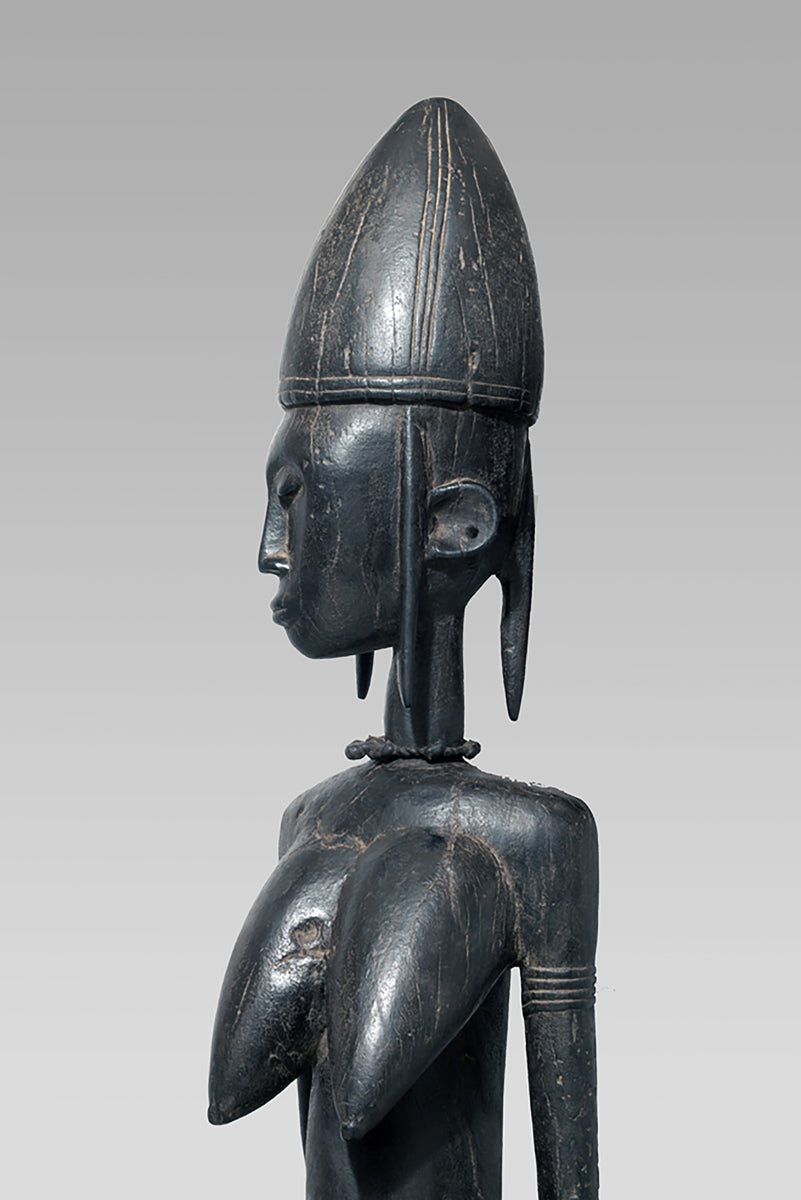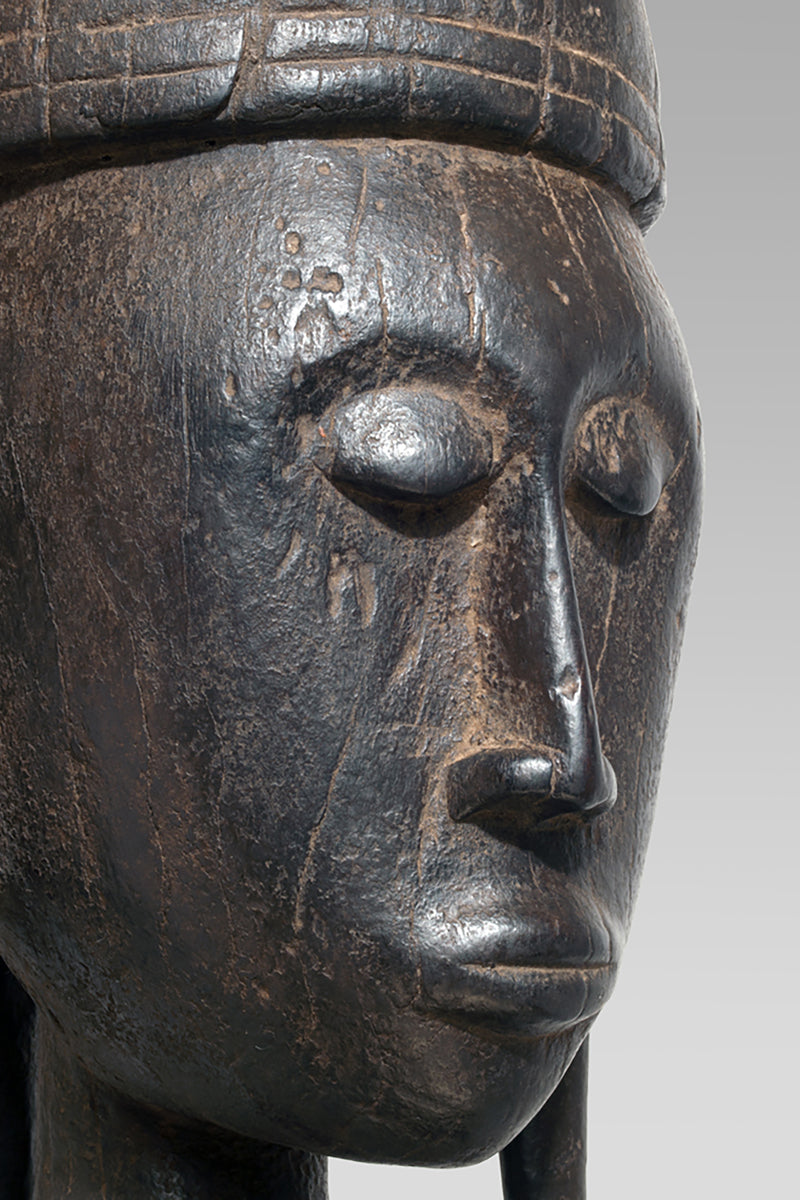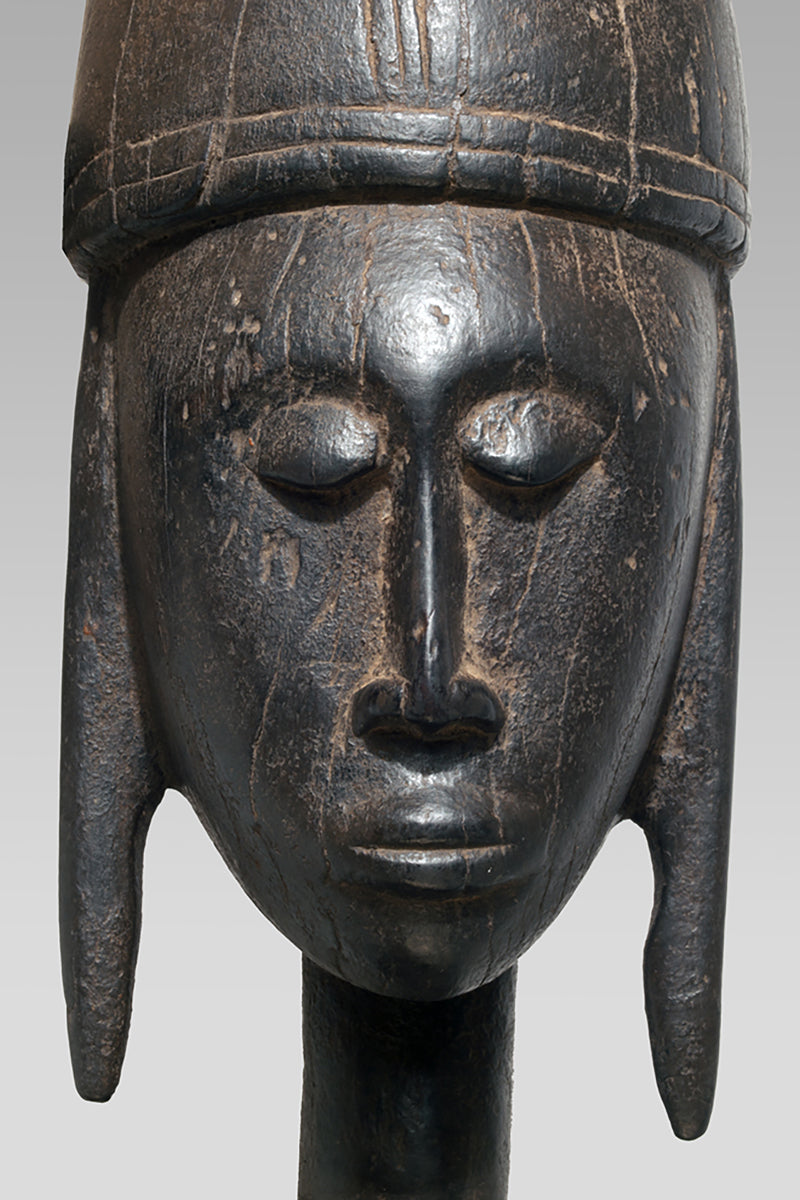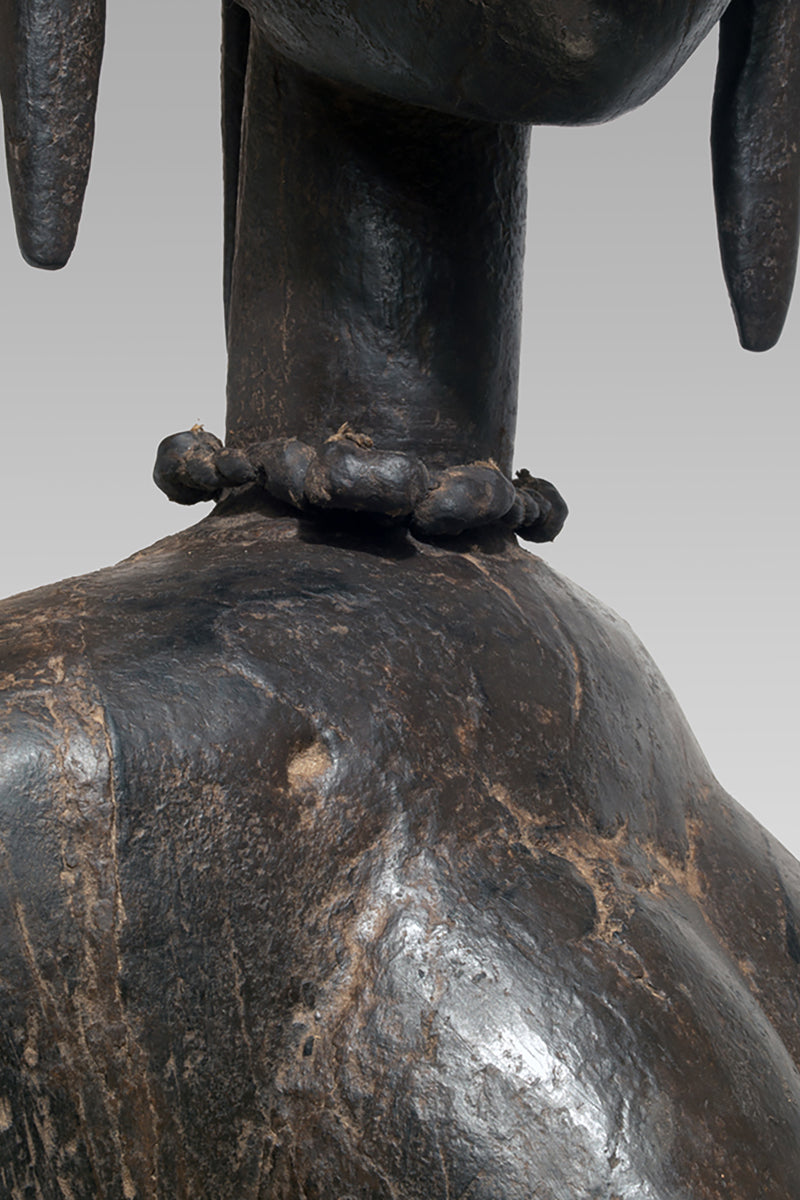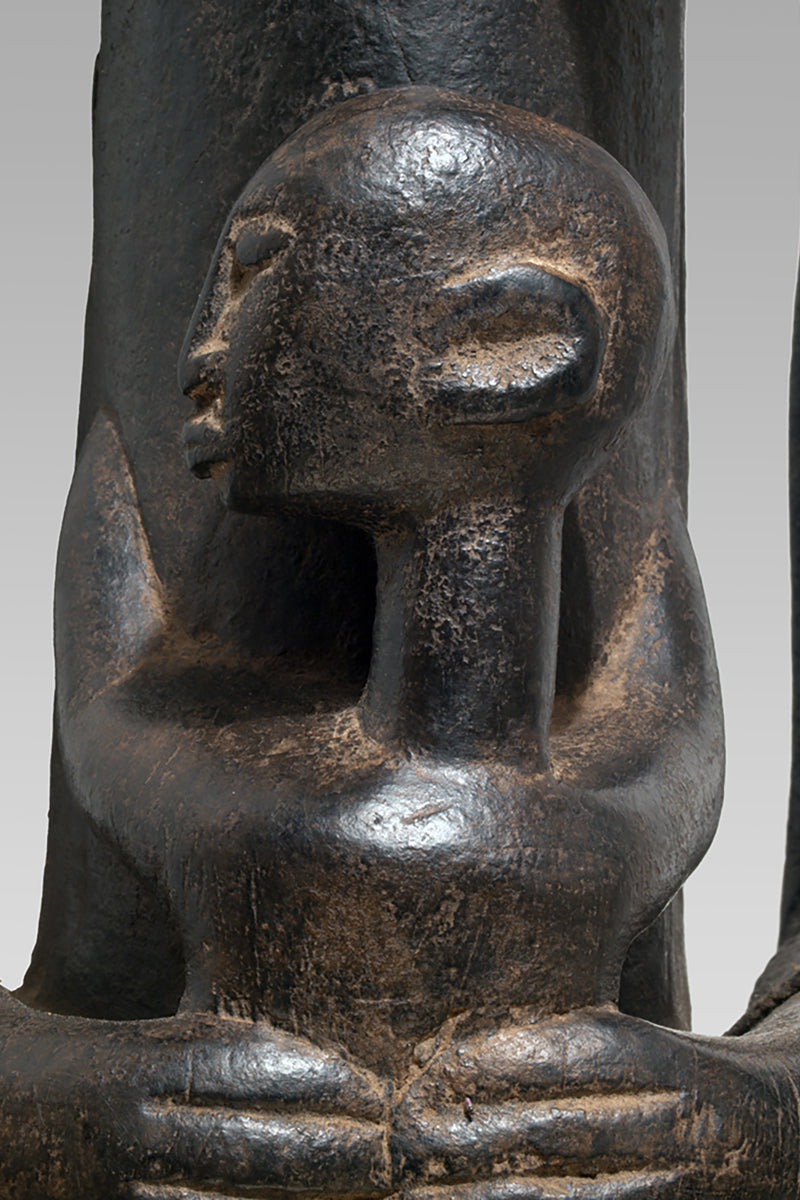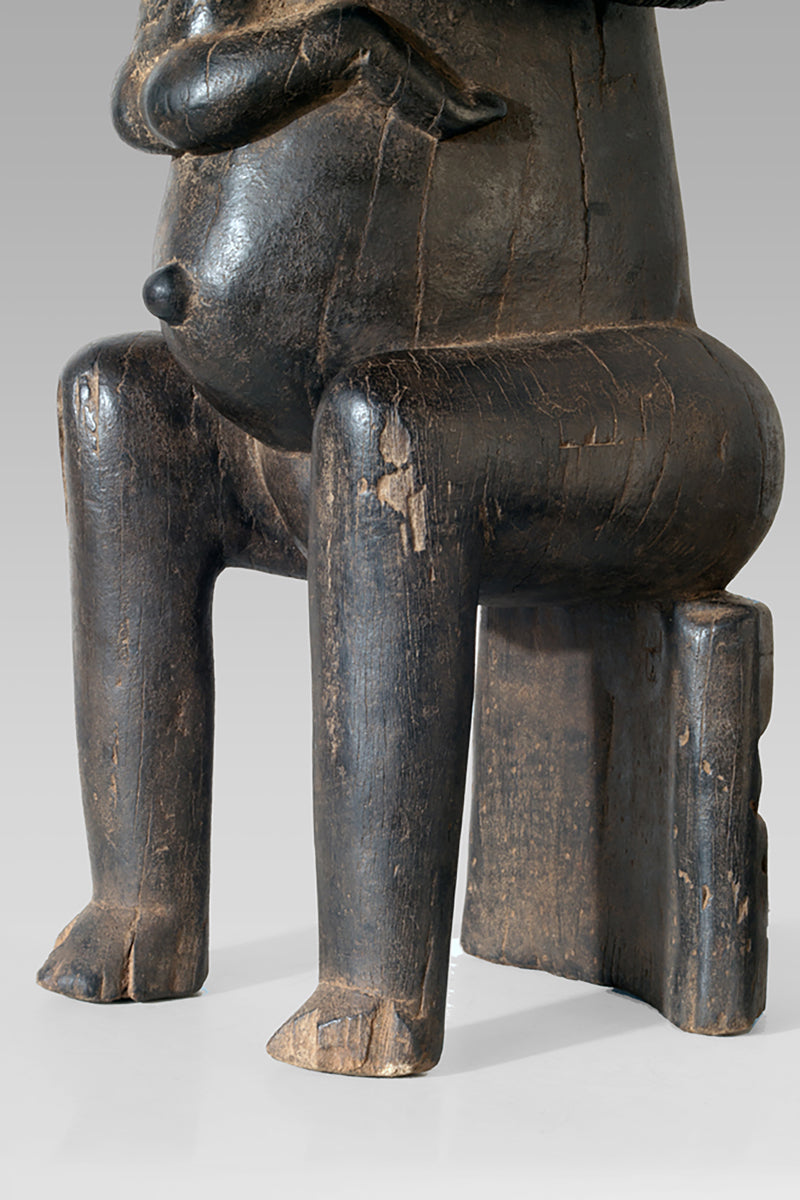Galerie Wolfgang Jaenicke
A Bamana Maternity figure
A Bamana Maternity figure
Couldn't load pickup availability
A Bamana Maternity figure, Mali, seated on a stool, carrying her infant close to her abdomen. Dark wood, glossy patina; signs of ritual use and age.
The Bamana Gwandusu sculptures stand as profound embodiments of cultural ideals and ritual significance within Bamana society. These figures are not merely artistic expressions but integral components of ceremonial life, particularly in fertility rites. Enshrined in village shrines, the Gwandusu are ritually washed, oiled, and adorned prior to public display, underscoring their sacred function and the community’s reverence for maternal power.^1 Such ritual preparation highlights the intimate connection between material culture and spiritual practice, where the physical treatment of the figure parallels the nurturing roles attributed to motherhood itself.
Central to the iconography of the Gwandusu is the representation of the mother figure, who is often depicted holding symbolic objects such as amulet-covered hats and daggers. These items accentuate her dual role as both nurturer and protector, imbuing her with supernatural agency alongside her maternal responsibilities.^2 This duality reflects a broader African conception of motherhood that transcends biological care, positioning the mother as a spiritual guardian who ensures the wellbeing of both family and society.
The concept of Gwandusu is linguistically and culturally significant, meaning “ardent passion” or “exceptional strength.” It encapsulates the Bamana ideal of badenya, the maternal bond that unites generations within the community.^3 This maternal bond serves as a metaphor for social cohesion, emphasizing continuity and collective identity through the nurturing figure. As noted by Daba Diara in his analysis of Bamana cultural expressions, badenya functions as a key social value that informs both artistic production and communal relationships.^4
Scholars such as Kate Ezra have offered seminal insights into the formal qualities and symbolism of Bamana figurative sculpture, situating these works within a larger framework of African aesthetics and ideology.^5 Similarly, Herbert M. Cole’s comprehensive study of maternity in African art contextualizes Gwandusu figures within a pan-African tradition that venerates motherhood as a locus of power and creativity.^6 Jean-Paul Colleyn’s ethnographic work provides further background on the Bamana, elucidating the social functions and meanings embedded in these sculptures.^7 Christa Clarke’s educational resources from the Metropolitan Museum of Art contribute to public understanding by linking Gwandusu to ritual fertility practices, enriching interpretive approaches to the figures.^8
Today, these sculptures can be observed in several notable collections and exhibitions. The Metropolitan Museum of Art in New York houses a monumental Mother and Child Gwandusu figure in its Rockefeller collection, which is occasionally displayed in Gallery 341 or available upon request for thematic exhibitions.^9 The University of Michigan Museum of Art also maintains a similar late 19th or early 20th-century mother-and-child figure, used extensively in educational programs focusing on fertility and maternal iconography.^10 The auction market, as evidenced by Christie’s 2024 sale of a 28¾-inch Gwandusu, reveals ongoing scholarly and collector interest in the ceremonial and aesthetic value of these figures.^11 Private galleries such as Hamill Gallery and Amazigh offer historical examples accompanied by detailed provenance and interpretive labeling, facilitating deeper engagement with their cultural significance.^12 The New Orleans Museum of Art’s exhibitions on maternity in African art include Bamana examples, highlighting the wider contexts of motherhood across African societies.^13 These exhibitions underscore the continuing relevance and vitality of Bamana maternal iconography in contemporary discourse.
Wolfgang Jaenicke’s blog provides accessible commentary that bridges academic and popular perspectives, emphasizing the ritual vitality and symbolic depth of Gwandusu sculptures.^14 Jaenicke’s reflections resonate with the views of Daba Diara, who advocates for greater recognition of Bamana art’s role in articulating social values through maternal imagery.^15 Together, their insights enrich the dialogue surrounding the interpretation and preservation of Bamana cultural heritage.
In conclusion, the Bamana Gwandusu figures offer a rich site for interdisciplinary study, intersecting art history, anthropology, and cultural studies. Their ceremonial use, symbolic complexity, and ongoing presence in museums and collections worldwide affirm their enduring significance. Through the maternal figure, Bamana society communicates ideals of protection, passion, and generational unity, providing a powerful testament to the role of motherhood in shaping human and social identity.
-
Metropolitan Museum of Art, “Ceremonial Use of Bamana Figures,” metmuseum.org.
-
Smarthistory, “Role of Women in Bamana Sculpture,” smarthistory.org.
-
Amazigh, “Gwandusu and the Concept of Badenya,” amazigh.it.
-
Daba Diara, “Bamana Cultural Expressions and Maternal Ideals,” personal blog, accessed June 2025.
-
Kate Ezra, Human Ideal in African Art: Bamana Figurative Sculpture (1986).
-
Herbert M. Cole, Maternity: Mothers and Children in the Arts of Africa (2017).
-
Jean-Paul Colleyn, Bamana, 5 Continents Editions (2009).
-
Christa Clarke, The Art of Africa: A Resource for Educators, University of Michigan Museum of Art, umma.umich.edu.
-
Metropolitan Museum of Art, “Gwandusu Figure in Rockefeller Collection,” metmuseum.org.
-
University of Michigan Museum of Art, “Bamana Mother-and-Child Figures,” umma.umich.edu.
-
Christie’s, “Sale of Bamana Gwandusu, 2024,” christies.com.
-
New Orleans Museum of Art, “Maternity Figures in African Art Exhibition,” noma.org.
-
Wolfgang Jaenicke, “Reflections on Bamana Gwandusu,” wolfgangjaenicke.com/blog, accessed June 2025.
-
Daba Diara, ibid.
Height: 117 cm
Weight: 17,7 kg
















